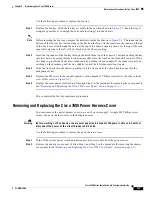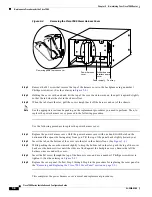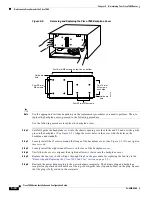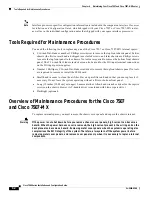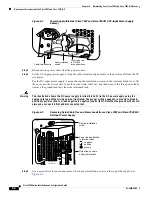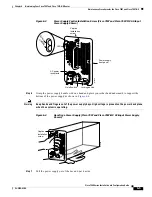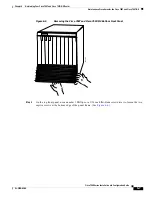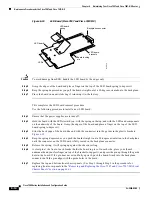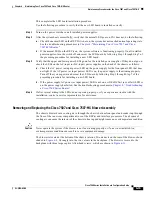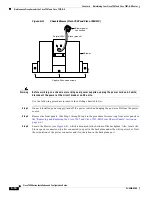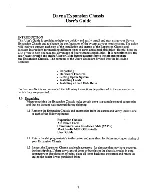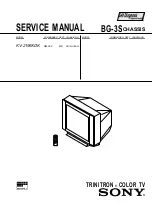
6-2
Cisco 7500 Series Installation and Configuration Guide
OL-5008-03 B0
Chapter 6 Maintaining Your Cisco 7507 and Cisco 7507-MX Router
Tools Required for Maintenance Procedures
Note
Interface processor-specific configuration information is included in the companion Interface Processor
Installation and Configuration Guide, which shipped with your Cisco 7507 or Cisco 7507-MX router,
as well as in the individual configuration notes that shipped with your spare interface processors.
Tools Required for Maintenance Procedures
You need the following tools to replace any one of the Cisco 7507 or Cisco 7507-MX internal spares:
•
3/16-inch flat-blade or number 1 Phillips screwdriver to remove the top front chassis panel. Earlier
chassis (the first several hundred shipped) use slotted screws, and later chassis use Phillips screws
to secure the top front panel to the chassis. No tools are required to remove the bottom front chassis
panel. The 3/16-inch flat-blade screwdriver can also be used for the DC-input terminal connections
on the DC-input power supplies.
•
Number 1 Phillips or 3/16-inch flat-blade screwdriver to remove the top front chassis panel. No tools
are required to remove or install the LED board.
•
Small hand vacuum to clean the air filter. Have a spare filter on hand so that you can replace it if
necessary. Do not leave the system operating without a filter or bottom front panel.
•
Long (12 inches [30.48 cm] or longer) 3-mm center-hex Allen-head wrench or driver for the captive
screws on the chassis blower. (A T-handle driver is included with blower spares kits.)
•
Flashlight (optional).
Overview of Maintenance Procedures for the Cisco 7507
and Cisco 7507-MX
To replace internal spares, you must remove the chassis cover panel and expose the chassis interior.
Warning
If the power is not shut down before you remove chassis cover panels, high current can become a
hazard. When the power harness cover is removed, the high current present in the wiring and on the
backplane also becomes a hazard. Removing metal cover panels when the system is operating also
compromises the EMI integrity of the system. Therefore, always turn off the system power before
removing metal cover panels, and remove cover panels only when it is necessary to replace internal
components.




